Art therapy is a type of therapy that involves the use of various art forms to help individuals improve their mental health and well-being. This approach has gained popularity in recent years as a complementary and alternative therapy to traditional talk therapy. However, many people wonder if any therapist can provide art therapy. In this article, we will explore this question in more detail and provide some insights into the qualifications and skills necessary to practice art therapy effectively.
What is Art Therapy?
Art therapy is a form of psychotherapy that uses various art forms, such as drawing, painting, sculpting, and collage, to help individuals explore their emotions, express themselves, and work through their psychological challenges. It is a creative and experiential process that can help individuals tap into their inner selves and discover new ways of coping with their issues.
Art therapists are trained mental health professionals who have completed specialized training in art therapy. They use various art techniques and methods to help individuals of all ages and backgrounds to address mental health challenges, such as anxiety, depression, trauma, and addiction.
Can Any Therapist Do Art Therapy?
While any therapist can incorporate art into their practice, not every therapist is trained to provide art therapy. Art therapy requires specialized training and certification to practice legally and ethically. The American Art Therapy Association (AATA) requires that all practicing art therapists have a master’s degree in art therapy or a related field, as well as complete a certain number of supervised clinical hours and pass a national certification exam.
Without proper training and certification, therapists may not have the necessary skills and knowledge to use art therapy effectively. They may not be familiar with the different art materials and techniques used in art therapy, the ethical and legal considerations surrounding the practice, and how to adapt their approach to meet the individual needs of each client.
Therefore, it is essential to work with a trained and licensed art therapist if you are interested in using art as a form of therapy. This ensures that you receive the best possible care and that the therapist you work with is qualified to provide art therapy safely and effectively.
Benefits of Art Therapy
Art therapy has many benefits for individuals who are struggling with mental health issues. Some of the benefits of art therapy include:
Conclusion
Art therapy is a powerful and effective form of therapy that can help individuals of all ages and backgrounds to address mental health challenges and improve their well-being. However, it is essential to work with a trained and licensed art therapist to ensure that you receive the best possible care. By doing so, you can experience the many benefits of art therapy and discover new ways of coping with your challenges.







